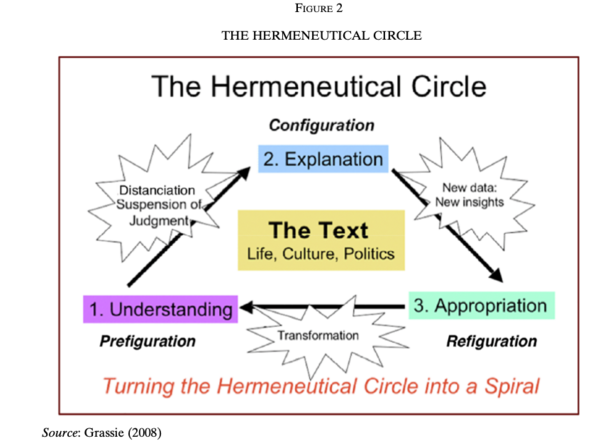Difference between revisions of "Curry-Howard-Lambek correspondence"
| Line 7: | Line 7: | ||
{{:Hermeneutic Circle}} | {{:Hermeneutic Circle}} | ||
=An Anectodal Reference= | =An Anectodal Reference= | ||
[https://youtu.be/03ZPDyj8TtM?t=822 | [[Bob Coecke]] talking about [https://youtu.be/03ZPDyj8TtM?t=822 his encounter with Lambeck]<ref>{{:Video/Compositional Intelligence}}</ref>. He later developed a python library for [[NLP]] called:[[lambeq]]<ref>{{:Paper/lambeq: An Efficient High-Level Python Library for Quantum NLP}}</ref> | ||
<noinclude> | <noinclude> | ||
=References= | =References= | ||
<references/> | <references/> | ||
Revision as of 18:24, 24 February 2022
Curry-Howard-Lambek correspondence(Q110810925) is an extension of Curry-Howard correspondence.
By thinking about the correspondence between Proof, Programs, and Categories, we can see a circular triangle of data types that mutually serves and the Test Assertions, Proposed Programs, and Data Content in ordered relations, as a self-sufficient environment for software verification and validation cycle.
Analogies in other fields
Think about the following diagram and related it to Curry-Howard-Lambek correspondence.
Hermeneutic circle(Q1570095) is the recursive structure that represent the iterative nature of interpretation.
Note the three stages in the following diagram[1]:
- Configuration
- Refiguration
- Prefiguration
An Anectodal Reference
Bob Coecke talking about his encounter with Lambeck[2]. He later developed a python library for NLP called:lambeq[3]
References
- ↑ Sangster, Alan (2021). "The Life and Works of Luca Pacioli (1446/7–1517), Humanist Educator". Abacus: A Journal of Accounting, Finance and Business Studies. local page: University of Sydney. 57. , Figure 2
- ↑ Coecke, Bob (Feb 24, 2022). Bob Coecke: Compositional Intelligence. local page: Topos Institute.
- ↑ Coecke, Bob (Oct 8, 2021). lambeq: An Efficient High-Level Python Library for Quantum NLP. local page: arXiv.
